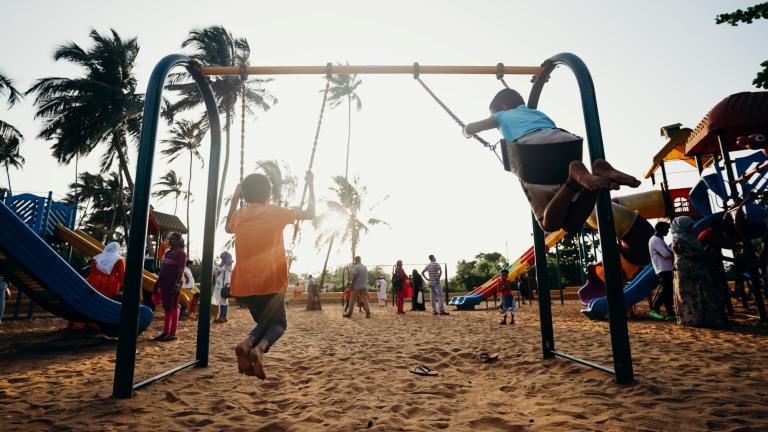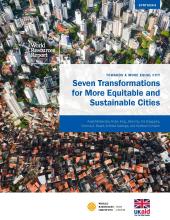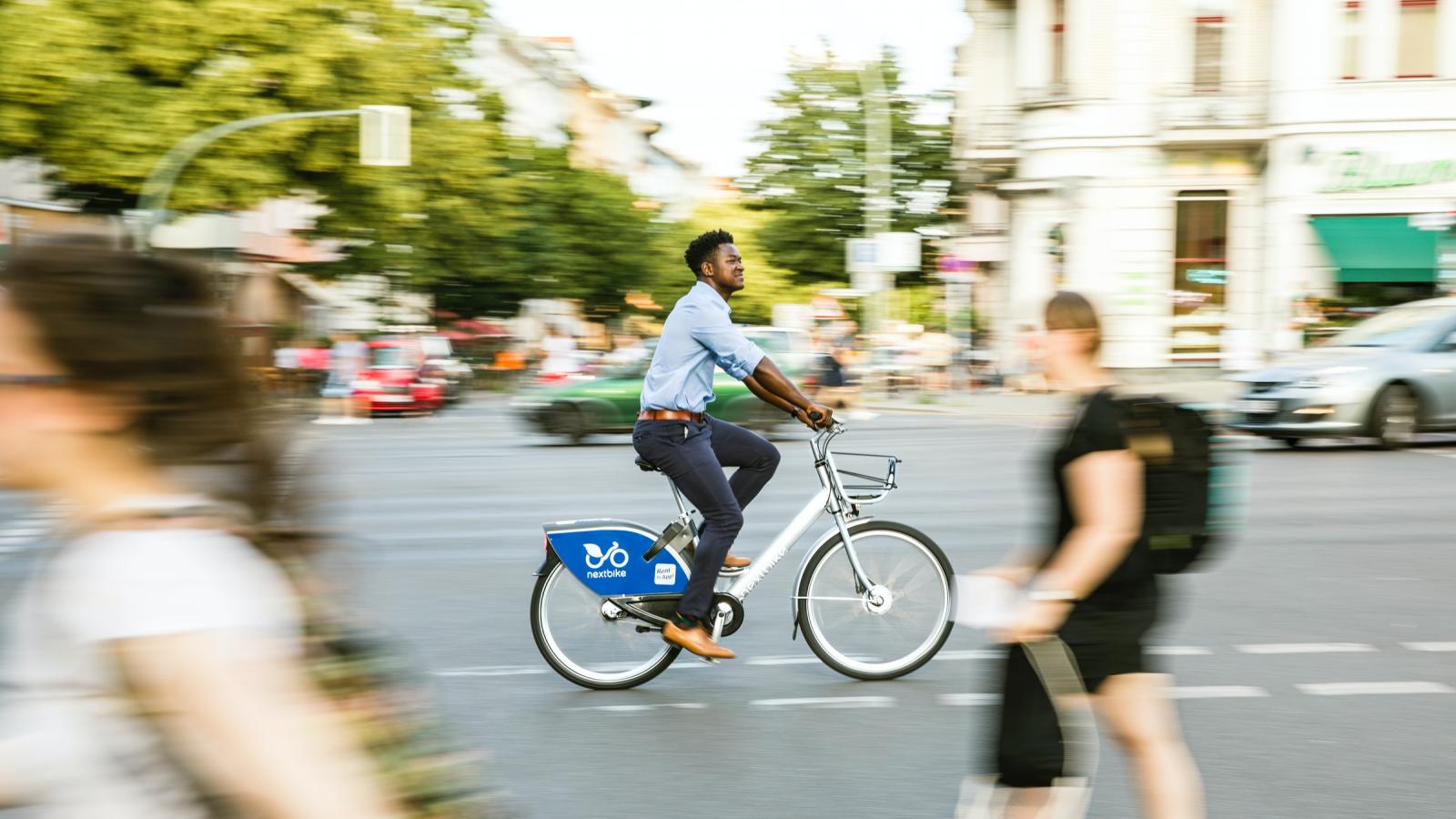Opinion
What does a green city look like?: Equitable, connected, and nature-positive
During the ClientEarth Summit, UrbanShift's John-Rob Pool joined Aditya Bahadur of the International Institute for Environment and Development and Caroline Watson of C40 Cities for a discussion on creating more sustainable, livable cities.
There is no question that for the world to successfully slow and mitigate the effects of climate change, cities will need to transform. Currently, urban areas consume 78% of the world’s energy supply, and produce over 60% of global greenhouse gas emissions. By 2030, 70% of the world’s population will live in cities, and over 60% of land projected to urbanize in those years is yet to be developed. The stakes are clear: Unless cities begin to chart a different path now, they will continue to perpetuate the climate crisis.
But cities are also where solutions to the climate crisis are being developed and taking root. They are where myriad sustainable transformations—small and large—are beginning to weave together, and where the vision for the green cities of the future is starting to take shape. To build momentum for the sustainable, transformative change that’s needed in the next decade, we need to be sharing ideas and examples of success stories, and creating a shared vision for what’s possible.
During its recent 2023 summit, ClientEarth, an environmental legal organization, convened an online panel discussion with this very goal. UrbanShift’s John-Rob Pool joined Aditya Bahadur, Principal Researcher at the International Institute for Environment and Development and Caroline Watson, Director of Transport at C40 Cities for a discussion moderated by Katie Nield, ClientEarth’s lead for Europe transport systems on what a green city looks like. Drawing on their expertise in nature-based solutions, equitable development, and sustainable transportation, the panelists shaped a vision for the city of the future that we can strive for.
Green cities are equitable and participatory
Just asking what a green city looks like isn’t sufficient, Bahadur said. “Only an equitable city can be a green, sustainable city.” Raising the point that one quarter of urban residents live in informal settlements—and in some cities, that proportion is even higher—it's essential, he added, that people currently marginalized in society and most vulnerable to climate risks be brought in front and center in the discussions on solutions and empowered to lead. In many Latin American cities, urban labs are providing a blueprint for inclusive approaches to urban planning and development. Urban labs bring together diverse coalitions of urban residents and stakeholders, from people living in informal settlements to policymakers, to inform local decision-making processes.
In Buenos Aires, for example, the Transformative Urban Coalitions (TUC) project, an initiative to support this type of collaborative approach, launched a lab in Villa 20, one of the city’s many informal settlements, in 2021. The coalition collectively agreed on actions to support the community through the pandemic and strengthened connections and decision-making processes that will be essential to tackling future challenges. TUC has counted 66 such labs across 13 countries, and it’s a model that many more cities could replicate to ensure sustainable solutions are developed from the ground up.
Green cities are connected
“What we’re talking about with green cities is cities where people can walk, cycle, be more active, and feel safe,” Watson said. “And they have amenities that are accessible by walking, cycling, public transport. We should be thinking about cities through that lens, and to achieve this transition, we need to take people along with us.” Watson said that at a high level, much of the discussion around sustainable transportation revolves around vehicle electrification. While that is critical, cities need to be focusing on the built environment and connectivity—ensuring that resources and amenities are located conveniently to where people live, and that transport networks consistently and equitably connect people to these resources. Rather than focusing solely on technology, cities need to be planning sustainable transportation with people at the center.
Jakarta, an UrbanShift city, exemplifies this people-centered approach to transport. In 2017, the city launched the JakLingko initiative to better connect and lower the cost of public transport for all users. As of 2021, the system has integrated payment and navigation for all transport options, from previously informal minibus taxis to bus rapid transit lines, and according to Watson, has meaningfully reduced the cost of transportation for individuals. By the end of this decade, Jakarta aims for every person to be able to access public transportation within 500 meters of their home, and increase public transportation mode share to 60%. Making transport easy, efficient, and affordable is essential for creating this shift.
Green cities are nature-positive
In the most literal sense, sustainable cities must be green. “We need cities to start considering the role of nature in providing infrastructure services for their residents, either alongside or in place of traditional gray infrastructure,” Pool said. For too long, urban development and nature have been positioned as at odds with each other. But nature, Pool said, can play an important role in creating resilience in the face of climate change. Tree-filled parks and greenways along major roads, for example, can play a meaningful role in mitigating the urban heat island effect, and subsequently reduce demand for air conditioning and lower the number of hours lost to extreme heat. By 2030, as much as 2% of total working hours are projected to be lost every year because it is too hot for people to work safely or efficiently. Increasing tree cover and green spaces is a proven, effective way for cities to respond to this risk. Additionally, nature provides essential and sustainable filtration services, for both water and air, and can help mitigate the impacts of flooding and erosion.
Cities can aim to become more nature-positive in different ways. They can retrofit existing infrastructure—for example, adding a planted median to a busy thoroughfare—which is often more complex and expensive, but still necessary. Or, for cities that are anticipating future development and growth, they can begin now to plan for ways to integrate nature into this development. Kigali, Rwanda’s capital city, is doing both. The city’s 2050 masterplan outlines the need to create green open spaces alongside new neighborhood developments. And to manage the city’s increasing flood risk, Kigali is beginning to rehabilitate its urban wetlands to their original capacity to mitigate the effects of heavy rainfall and clean and filter the local water supply. Already, Kigali has undertaken a successful restoration project in the 120-hectare Nyandungu Wetland on the east side of the city: Over the past several years, the city has cleared the area of industrial infrastructure and allowed the natural ecosystem to regenerate. It’s now a fully functioning wetland and a newly established ecotourism park, which is providing essential ecosystem services for the area while generating revenue for the city from visitors.
Ultimately, to become truly green, sustainable, and equitable, cities must take an integrated approach to developing and evolving in response to climate change. Climate change and population growth are placing enormous pressure on cities and ecosystems alike. By placing people and their needs at the center of decision-making and considering how incorporating nature into thoughtful transportation and land-use planning can support the health and well-being of residents, cities can begin to address the risks of climate change now, and ensure resilience into the future.

UrbanShift Workshop at Ecocity World Summit: Greener, Healthier, Vibrant Neighbourhoods
This session offered an overview of implementing sustainable neighbourhood design, and overcoming challenges cities face in creating more livable communities.

Seven Transformations for More Equitable and Sustainable Cities
This synthesis of the World Resources Report recommends seven transformations to create a new dynamic for durable, cross-sectoral, city-wide change and provides a roadmap to more equitable access to core urban services.

Building Resilience from the Community Up: Lessons from Rotterdam's People-Centered Climate Action Strategies
Over a week in Rotterdam, representatives from Latin American cities dove into the city's thoughtful approach to human-centered climate resilience in an UrbanShift-led Peer-to-Peer Exchange.

Transforming a Dump Site in Costa Rica into a Community Green Space
In Costa Rica’s capital region, a locally led, GEF-funded effort to clean up trash provides a model for successful community regeneration initiatives.

